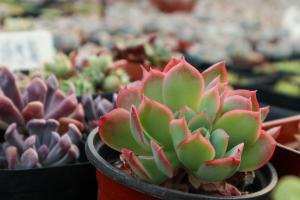1、 Curing method
1. Temperature: it can withstand low temperature. Even zero temperature will not affect its growth. It is more sensitive to temperature, especially after more than 30 degrees, its growth state will decrease

2. Watering: the growth rate is fast, and the water supplement should be guaranteed. The soil water should be kept for a long time. After entering the rainy season, the water should be properly controlled to avoid the roots being soaked by ponding for a long time. After the temperature is lower than the subzero temperature, stop watering, in order to keep the soil dry and allow the plants to survive the winter safely

3. Fertilization: it generally grows very fast, so the demand for nutrition is relatively high. It needs to be fertilized once a week. In addition to fertilizing the soil, it also needs to use foliar fertilizer. The frequency of using foliar fertilizer is once or twice a month

4. Light: it likes a sunny, warm and humid living environment. It can accept all day sunshine during its growth period. In summer, the temperature is high. At this time, it is not suitable for it to accept all day sunshine. It needs to be shaded by 50% at noon, or it can be kept in a cool place. At other times, it is necessary to ensure sufficient light. Insufficient light will lead to the overgrowth of its leaves, and the color of the leaves will change from red to green, which will affect the beauty

2、 Breeding skills
1. Propagation: it can be propagated by cutting. Compared with other succulent plants, its reproductive success rate is relatively high. Just insert the strong leaves directly into the soil with sufficient nutrients

2. Pruning: it grows very fast and is easy to burst. In order not to affect the beauty, it is necessary to prune the branches with poor growth, so as to concentrate nutrients and make healthy plants grow better

3、 Problem diagnosis
1. Insect pests: it is easy to be infected with mealybugs, scale insects, snails and other pests. At ordinary times, it is necessary to ensure that there are no insect eggs in the soil and no insects and bacteria in the maintenance environment. If it is unfortunately infected, it needs to be sprayed with 1000 times of sterilized spirit aqueous solution

2. Pathological changes: if its branches and leaves begin to rot, it may be because the roots are soaked in water for a long time and cannot breathe due to excessive watering. At this time, it needs to dig out its roots, remove the rotten place, disinfect the incision and then plant again

4、 Other issues
1. Edible: although it is not poisonous, it should not be eaten. After all, it doesn't taste very good and has no edible value

2. Toxic: it has no toxicity after application, so it can be cultured safely


 how many times do yo...
how many times do yo... how many planted tre...
how many planted tre... how many pine trees ...
how many pine trees ... how many pecan trees...
how many pecan trees... how many plants comp...
how many plants comp... how many plants can ...
how many plants can ... how many plants and ...
how many plants and ... how many pepper plan...
how many pepper plan...































